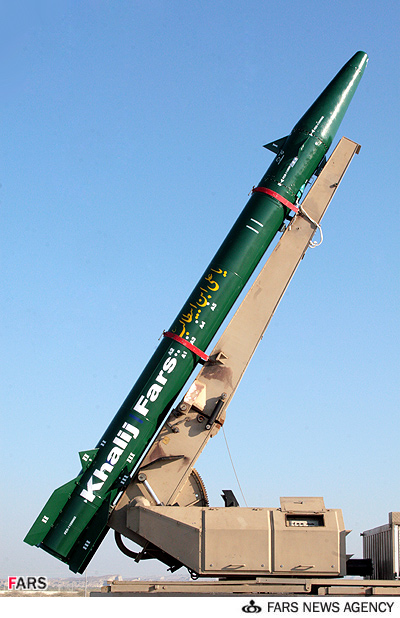Aspahbod
FULL MEMBER

- Joined
- Jun 25, 2010
- Messages
- 334
- Reaction score
- 1
- Country
- Location
TEHRAN (FNA)- Commander of the Islamic Revolution Guards Corps Major General Mohammad Ali Jafari underlined IRGC's abundant military achievements in the post-revolution era, and said that the IRGC has started mass-production of a recently-developed smart anti-ship ballistic missile.
"The IRGC's smart ballistic missiles are now in mass-production and this type of missiles can hit and destroy targets with high-precision," Jafari told reporters in a news conference here in Tehran on Monday.
"These new missiles enjoys supersonic speed and cannot be tracked or intercepted by enemy," the commander said, adding that missiles can hit targets 300km away with high-precision.
He added that the IRGC will provide the media with the footages of the new missile, named "The Persian Gulf", in coming days.
FNA will release several photographs of this missile in hours.
Elsewhere, Jafari also announced that the IRGC has just finished designing and developing long-range passive radars and will soon start production, adding that this new radar system covers within a 1,100km-radius.
"These radars would remarkably increase the IRGC's capability in identifying sea-based targets," he noted.
Iran has been pushing an arms development program in recent years in a bid to reach self-sufficiency. Tehran launched its arms development program during the 1980-88 Iraqi imposed war on Iran to compensate for a US weapons embargo. Since 1992, Iran has produced its own jet fighters and armored vehicles as well as radar-avoiding missiles and other high-tech weapons.
Yet, Iranian officials have always stressed that the country's military and arms programs serve defensive purposes and should not be perceived as a threat to any other country.





Source: Fars News Agency :: Commander: IRGC Mass-Producing Anti-Ship Ballistic Missiles
"The IRGC's smart ballistic missiles are now in mass-production and this type of missiles can hit and destroy targets with high-precision," Jafari told reporters in a news conference here in Tehran on Monday.
"These new missiles enjoys supersonic speed and cannot be tracked or intercepted by enemy," the commander said, adding that missiles can hit targets 300km away with high-precision.
He added that the IRGC will provide the media with the footages of the new missile, named "The Persian Gulf", in coming days.
FNA will release several photographs of this missile in hours.
Elsewhere, Jafari also announced that the IRGC has just finished designing and developing long-range passive radars and will soon start production, adding that this new radar system covers within a 1,100km-radius.
"These radars would remarkably increase the IRGC's capability in identifying sea-based targets," he noted.
Iran has been pushing an arms development program in recent years in a bid to reach self-sufficiency. Tehran launched its arms development program during the 1980-88 Iraqi imposed war on Iran to compensate for a US weapons embargo. Since 1992, Iran has produced its own jet fighters and armored vehicles as well as radar-avoiding missiles and other high-tech weapons.
Yet, Iranian officials have always stressed that the country's military and arms programs serve defensive purposes and should not be perceived as a threat to any other country.





Source: Fars News Agency :: Commander: IRGC Mass-Producing Anti-Ship Ballistic Missiles













